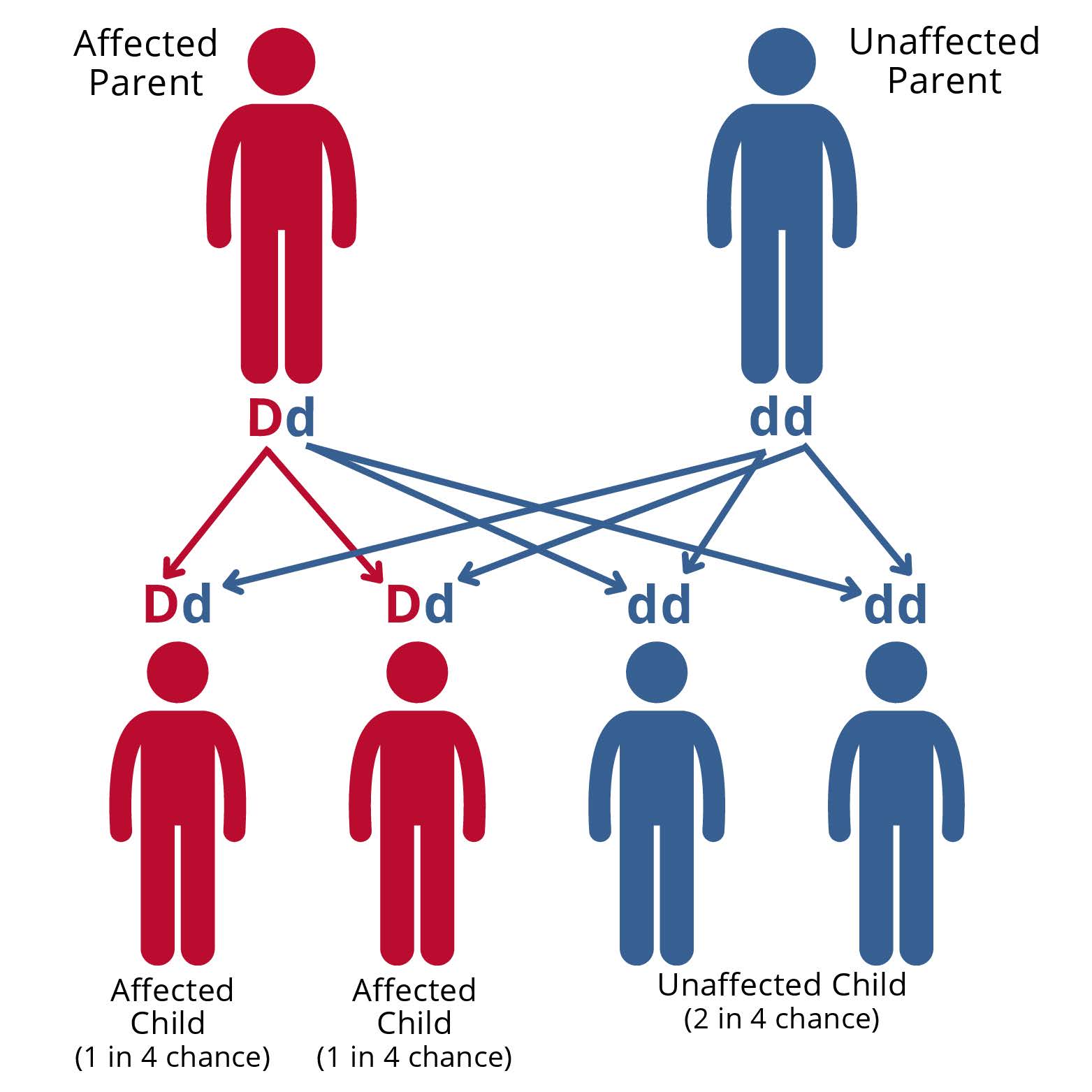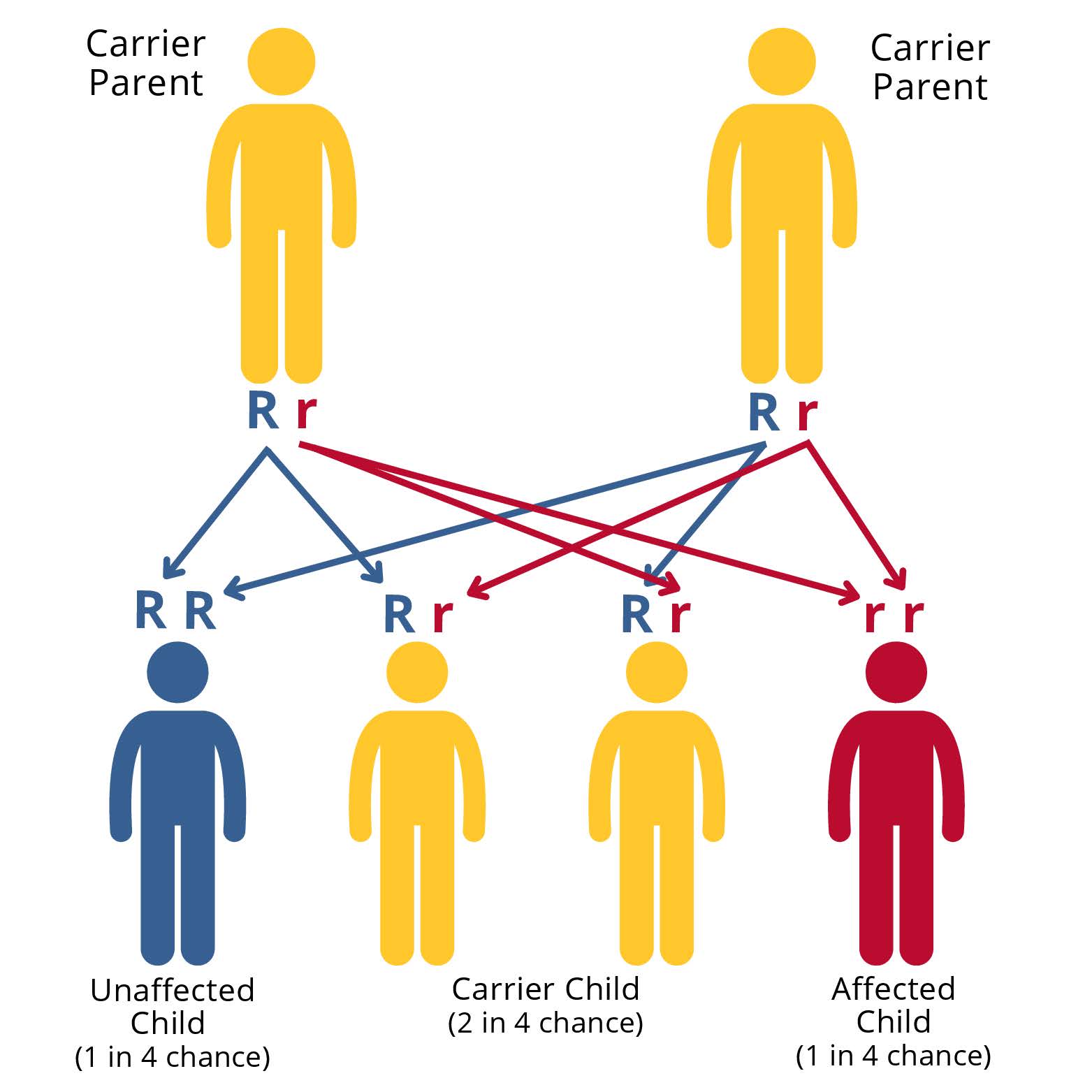Genetics
The gene for von Willebrand factor is on one of the autosomes, chromosome 12, known as an autosomal condition. Since it is not on the sex chromosome, it occurs equally in males and females. However, females are more likely to need the support of a healthcare provider for help managing menstruation, pregnancy, and childbirth.
Types of VWD with Dominant Inheritance
Types 1, 2A, 2B, and 2M VWD have a dominant inheritance pattern. This means that if a child inherits an unaffected gene from one parent and an affected, pathogenic variant for one of these types of VWD from the other parent, the child will have VWD. The affected, pathogenic variant VWD gene is stronger, or dominant, over the unaffected gene.
If only one of the parents has a dominant inheritance type of VWD, there is a 50% chance with each pregnancy that the child will have VWD. Figure 3-1 shows the possible gene combinations for these autosomal dominant types of VWD.
If only one parent has a dominant inheritance type of VWD, with each pregnancy there is:
- a 50% chance of having a child who inherits the VWD variant gene
- a 50% chance of having a child who does not inherit the VWD variant gene
With Type 1 VWD, sometimes a person can inherit the variant gene but not have any symptoms of VWD. This is called reduced (or incomplete) penetrance.
Figure 3-1. An autosomal dominant inheritance pattern – the possible gene combinations with types 1, 2A, 2B, and 2M VWD. The dominant gene is shown with a capital D. A child will have the disorder if they inherit the dominant gene from either parent.

Types of VWD with Recessive Inheritance
Type 2N and Type 3 VWD have a recessive inheritance pattern. For Type 2N VWD, this means that if a child inherits an unaffected gene from one parent and a variant gene for Type 2N VWD from the other parent, the child will not have VWD. They will be a carrier. This is because the Type 2N gene is recessive – it is not stronger, or dominant, over the unaffected gene. For the child to have Type 2N VWD, they inherited the variant gene from both parents.
For a child to get Type 3 VWD, they inherit the VWD gene from both parents. Usually, the parents have the Type 1 VWD gene and may not know.
The figure below shows the possible gene combinations for these autosomal recessive types of VWD.
If both parents carry a pathogenic variant for VWD, with each pregnancy there is:
- a 25% (one in four) chance of having a child who is unaffected
- a 25% (one in four) chance of having a child who has VWD
- a 50% chance of having a child who does not have VWD but carries the pathogenic variant
Figure 3-2. An autosomal recessive inheritance pattern – the possible gene combinations with types 2N and 3 VWD and most platelet disorders. The recessive gene is shown with a little r. To have the disorder, a child must inherit the pathogenic variant gene from both parents.

Blood Type
Interestingly, some people with type 1 VWD do not have a mutation in their gene for von Willebrand factor on chromosome 12. People with blood type O have lower von Willebrand factor levels than people with blood types A, B or AB. In these individuals, the inheritance pattern is different and follows blood type. Doctors and scientists are still learning more about this group of people.
